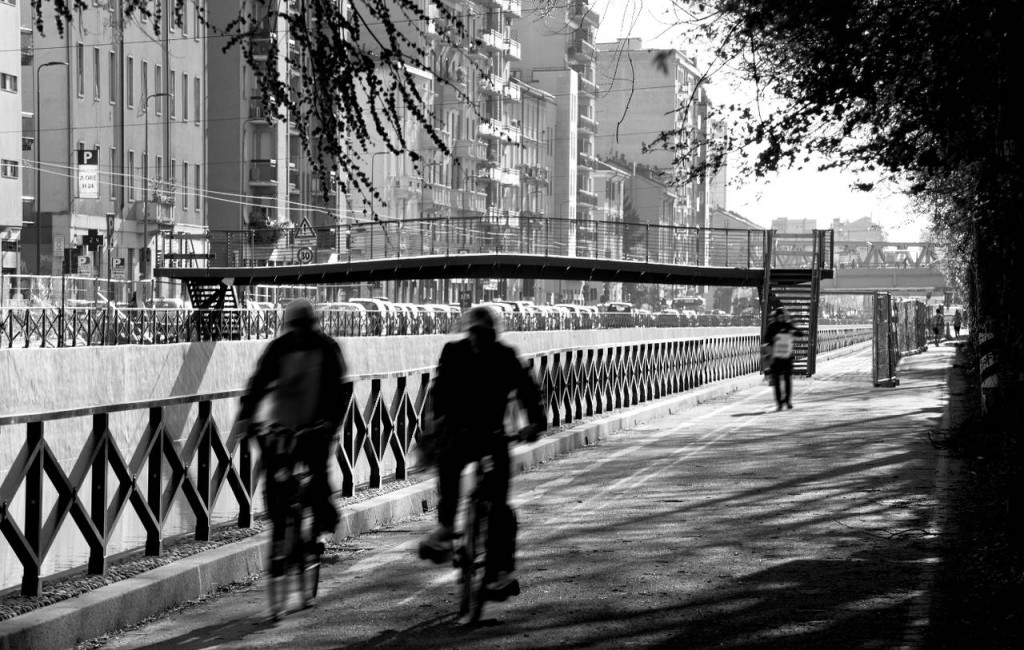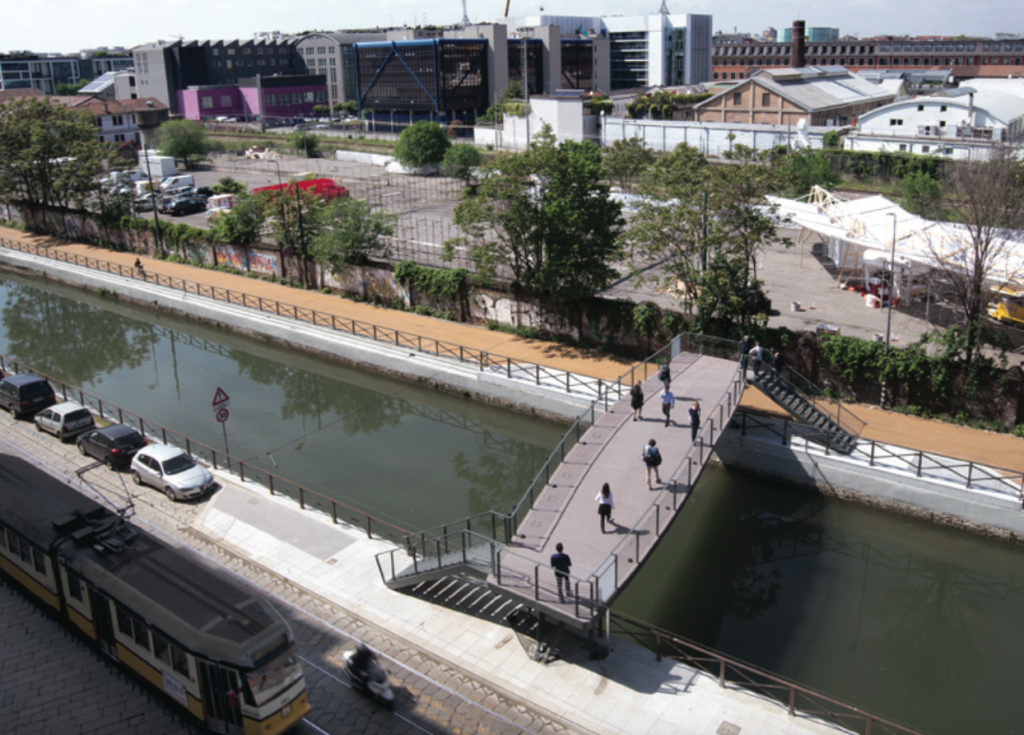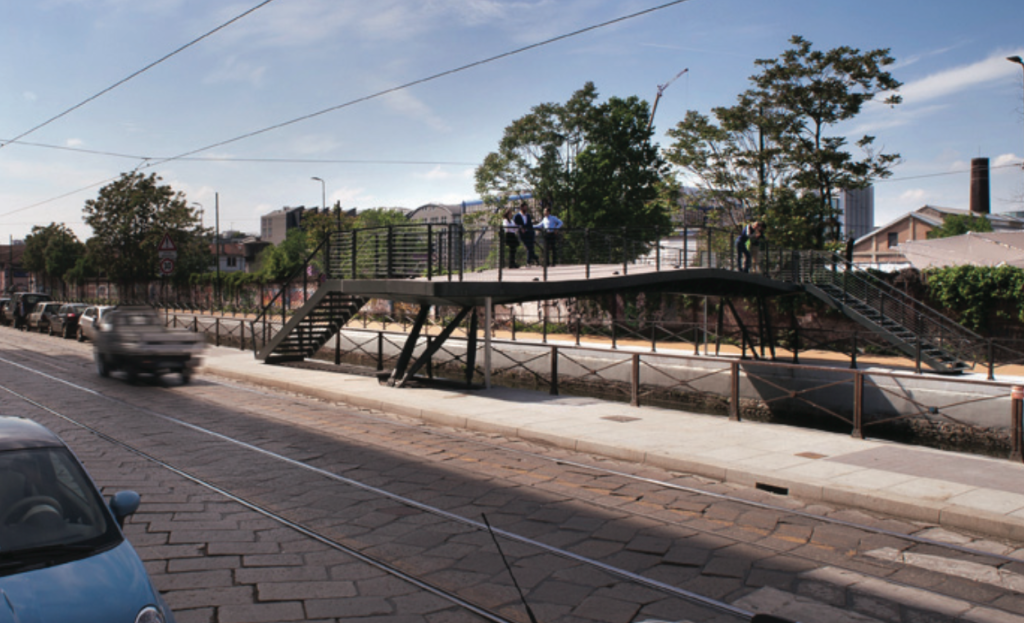The bridges designed by Lombardini 22 were conceived in the wider requalification plan for the towpaths of Naviglio Grande and Canale Villoresi; important segment of the green and blue colored ring made up of water, cycle paths and routes around the city down to the Ticino valley. In this area so-called "La Mesopotamia Milanese" (because it’s enclosed by two canals) always been home to many creatives and artisans , the bridge is a great opportunity to create quality connections: in this case an architectonic and technical quality, besides urban quality, but above all the quality of the experience. The Navigli canals were an infrastructure for fields irrigation, and a system for transporting goods and people until recent times when they started to represent an obstacle and a dividing element to the city road development.

Now the new bridges can be an important element to find back that urban continuity Milan owned.
“Almost all the existing bridge nowaday have an unquestionable value from an historical point of view, but quite often from a functional point of view they discriminate some users and in this sense they are an obstacle and we have to make a choice - explains Marco Amosso, the design leader -. The already existing bridges over the navigli putted in the 1st place the fact that canals had to be navigable. Now we think it’s more important the urban connection, So when we started to think this way we found a plain bridge was the better solution: maximum connection, separate crossing for different users, minimal visual impact, and closeness to the water”.

The design is intentionally simple, almost neutral. Its lines are inspired by nature: a dragonfly, a water insect, and by the technical imaginary of a speed boat; also the technical quality of the 19th century iron bridge inspired us. The bridge is not only a path to pass but a place to rest and to observe. Sections are slim thanks to the use of iron; light, transparent balustrades minimize its visual impact. From a structural point of view it’s a trapezoidal section truss that lies on two pillars on which are fixed at regular intervals ribbed supports of the deck. Longitudinally the beam has a maximum gradient of 8%, raised to 2.5 mt from level of the banks. Four struts converging in three points each , never vertical, constitute perfectly braced attacks on the ground. Two single ramp metal ladders at the opposed sides and two open lifting platforms allow a full and independent fruition.

Lighting is architectural: linear light to highlight evenly structural design; oblique lighting to highlight the pedestrian path; recessed floor light to give accent; all the lighting systems adopted are Led: programmable, to minimize energy consumption and maintenance.
On the ground, the pedestrian platforms paving (granite of Montorfano and porphyry of Valcamonica) and anchor plates paving (in concrete with aggregates in view as to represent the plinth supporting the bridge itself) create a new system that it’s also an opportunity to rethink in a wider way the road level: integrating public transport stops, occupying part of the road up to a proper distance from the tram tracks and creating protected areas from traffic as small oasis for pedestrians. A complete repeatable object, adaptable not only to these two specific cases but also for future intersections: the idea is that of a flexible system, able to fit into different contexts.










